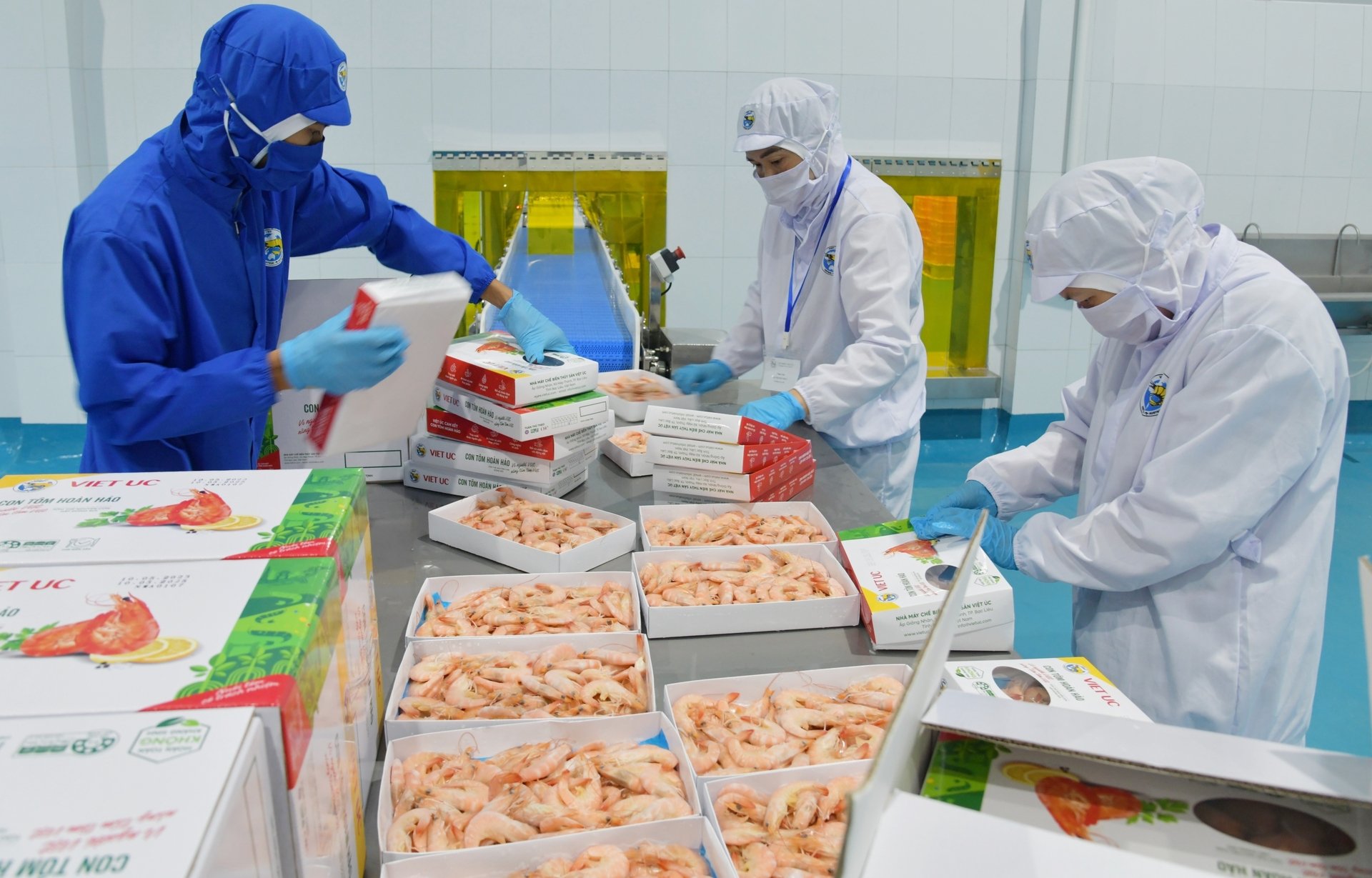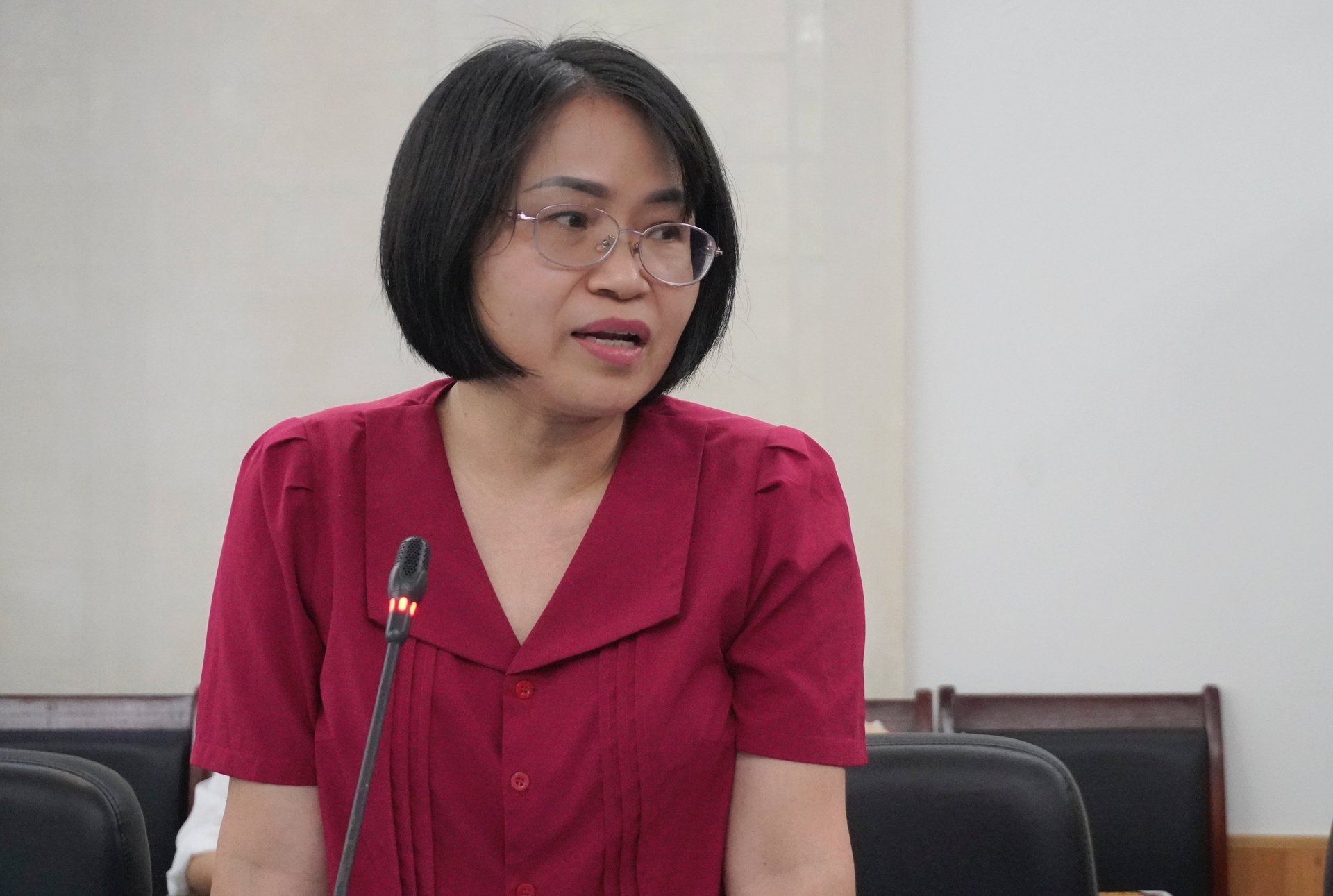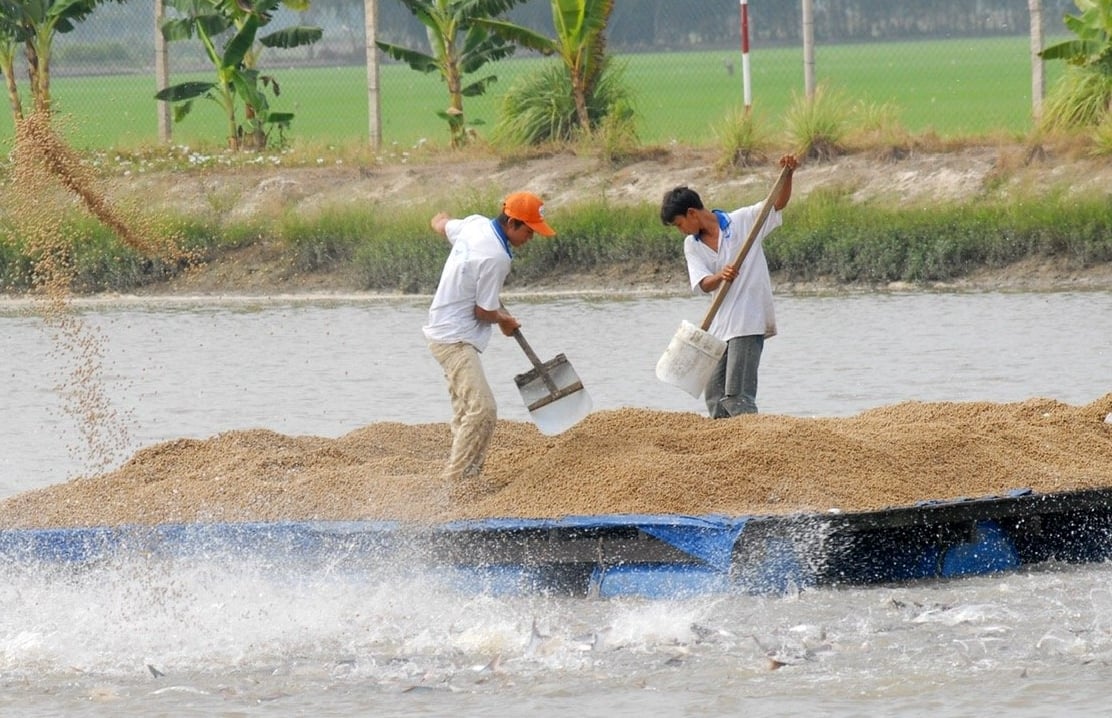November 27, 2025 | 07:09 GMT +7
November 27, 2025 | 07:09 GMT +7
Hotline: 0913.378.918
November 27, 2025 | 07:09 GMT +7
Hotline: 0913.378.918
Vietnam is one of the three greatest seafood exporters in the world, following China and Norway, according to the Vietnam Association of Seafood Exporters and Producers (VASEP).
Vietnam has exported seafood to nearly 170 markets, including significant and highly demanding economies such as the United States, the European Union, Japan, China, South Korea, Australia, and the United Kingdom.

Vietnam has exported seafood to nearly 170 markets, including large markets with strict standards. Photo: Hong Tham.
Vietnam's marine export turnover to the United States underwent numerous significant fluctuations between 2020 and 2024, as per VASEP.
Export revenue exceeded USD 1.6 billion in 2020, and it surpassed USD 2 billion in 2021 as a result of elevated import demand during the U.S. economy's recovery from the pandemic. Exports maintained their apex of over USD 2.1 billion in 2022, indicating a remarkable 4.7% increase. However, inflation, reduced consumer expenditure, and trade barriers imposed by the United States resulted in a significant decline in 2023, resulting in a mere USD 1.56 billion.
In 2024, exports increased by 16.3% to exceed USD 1.8 billion, representing 18% of Vietnam's total seafood export turnover. Vietnam's second-largest seafood export market is presently the United States, following China and Hong Kong.

Ms. Le Hang, Director of Communications of VASEP, said that Vietnamese seafood has the opportunity to expand its market share in the United States, especially when pangasius can replace most of the tilapia market share by 2025 due to tariffs. Photo: Hong Tham.
The United States is experiencing substantial alterations in the patterns of seafood consumption. A survey by the Food Marketing Institute (FMI) found that 44% of American consumers prefer wild-caught seafood over farm-raised products.
Furthermore, the seafood industry is experiencing a significant increase in the popularity of ready-to-eat seafood, particularly sushi. Per Circana's data, sushi delis generate revenues of USD 2.4 billion, which are the highest among prepared foods in the retail sector. Gen Z's increasing appetite for sushi is the primary factor driving this development, as they show higher spending levels than previous generations.
Furthermore, the popularity of experimenting with new cuisines through social media and keto diets are fostering the growth of premium canned seafood products. The convenience of packaged seafood products that are designed to have an extended shelf life is also a significant factor in their popularity.
In response to the tariff policies implemented by the Trump administration, Le Hang, the Communications Director of VASEP, stated that Vietnam is among the top four countries that are most vulnerable to the negative effects of these policies. Nevertheless, the timing and extent to which Vietnamese seafood will be subject to new tariffs are still uncertain, as this is contingent upon a variety of factors. The U.S. market presents Vietnam's seafood sector with both opportunities and challenges in this new context of tariff and trade policy adjustments.

It is necessary to quickly implement the issuance of farming area codes for shrimp and pangasius to ensure traceability regulations of markets and facilitate exports. Photo: Hong Tham.
Hang believes that Vietnamese seafood has the potential to increase its market share in the United States, particularly in light of the fact that pangasius (tra fish) may replace a substantial percentage of tilapia imports by 2025 as a result of tariff changes. Furthermore, Vietnam's premium marine products have the potential to expand their exports to the Chinese market.
Nevertheless, the obstacles are equally significant. Tariffs have the potential to exacerbate competitive pressures in both the Chinese domestic market and other international markets. In China and Canada, Vietnamese seafood is contending with fierce competition. Simultaneously, the United States is anticipated to escalate its trade defense investigations into Vietnam's agricultural, forestry, and fishery exports, which include anti-dumping (AD), countervailing duties (CVD), and anti-circumvention inquiries. Increased costs and diminished competitiveness of Vietnamese products in the U.S. market are the consequences of AD and CVD tariffs.
Additionally, Vietnamese enterprises are subject to countervailing duties imposed by the United States, in addition to anti-dumping duties. The U.S. Department of Commerce (DOC) has designated numerous Vietnamese government programs as countervailable subsidies. In the investigation, 26 programs were determined to be countervailable, while 10 were not. Several others remain under further review.
Raw material shortages, CVD tariffs, and intense competition from Indonesia, India, and Ecuador are among the numerous obstacles that the shrimp industry encounters. Additionally, the United States may implement more stringent regulations and import controls for seafood, with a particular emphasis on traceability and origin verification.
Le Hang believes that under the United States’ new tariff policies, the opportunities for Vietnamese seafood seem to outweigh the challenges. The industry has the opportunity to capitalize on this moment and achieve significant advancements—provided that the supply of primary materials is robust in terms of both quantity and quality.
Businesses must create contingency plans to prevent disruptions in their supply chains in the face of swiftly changing international trade dynamics. It is essential to establish sustainable and adaptable supply chains that incorporate both domestic and imported basic materials as needed to prevent shortages.
It is imperative to remain updated on market developments and to modify product-market strategies in a flexible manner to accommodate the new environment. For example, Vietnamese exporters may endeavor to expand into the Middle East, maintain competitive offerings for the ASEAN market, boost fresh seafood exports to China, and increase pangasius market share in the U.S.
In 2025, it is essential to maintain a positive reputation and expand market share in potential markets by consistently guaranteeing the quality of export products, transparency, and effective traceability. Businesses are also encouraged to increase their investment in deep processing in order to broaden market access and improve value-added products, all while reducing the risk of anti-dumping duties and other trade barriers in this emerging environment. Companies must also proactively prepare the requisite resources to respond effectively and acquire a comprehensive understanding of trade defense laws.
Translated by Linh Linh

(VAN) Le Hoai Trung, Member of the Communist Party of Vietnam Central Committee and Minister of Foreign Affairs, held talks with Vi Thao, Chairman of the Guangxi Zhuang Autonomous Region (China) this week.

(VAN) The Mekong River Commission adopts the 2026 - 2030 Strategic Plan with a people-centered approach.
/2025/11/26/1720-1-200855_132.jpg)
(VAN) Viet Nam and Japan have many conditions to expand cooperation on climate change adaptation, particularly in disaster risk management based on advanced technologies.

(VAN) The strong development of digital technology and artificial intelligence is opening up opportunities to transform science and technology into a 'Magic eye' for disaster forecasting and early warning.

Applying vaccines and proactive disease prevention helps pig herds stay healthy, maintain productivity, reduce risks, and decrease reliance on antibiotics in modern livestock farming.

(VAN) Many advanced agricultural technologies and products were shared at the Viet Nam - South Korea Agricultural Technology Introduction, Trade Promotion, and Connection Seminar 2025.

(VAN) Minister Tran Duc Thang hopes to strengthen connections and exchanges with China in agriculture and environment sector through the Embassy of Vietnam in Beijing.